A reaction characteristic of vicinal diols is their oxidative cleavage on treatment with periodic acid (HIO4). The carbon-carbon bond of the vicinal diol uinit is broken and two carbonyl groups result. Periodic acid is reduced to iodic acid (HIO3)

Cyclic diols react to give dicarbonyl compounds. The reactions are faster when the hydroxyl gorups are cid than when they are trans but both stereoisomers are oxidised by periodic acid. Periodic acid cleavage of vicinal diols is often used for analytic purposes as an aid in structure determination. By identifying the carbonyl compounds produced, The constitution of the diol may be deduced.

The compound 'X' in above reaction is :

H−O∣∣C−CH2−CH2−CH2−O∣∣C−H
both of these
none of the above
The correct Answer is:b
Step by step video, text & image solution for A reaction characteristic of vicinal diols is their oxidative cleavage on treatment with periodic acid (HIO_(4)). The carbon-carbon bond of the vicinal diol uinit is broken and two carbonyl groups result. Periodic acid is reduced to iodic acid (HIO_(3)) Cyclic diols react to give dicarbonyl compounds. The reactions are faster when the hydroxyl gorups are cid than when they are trans but both stereoisomers are oxidised by periodic acid. Periodic acid cleavage of vicinal diols is often used for analytic purposes as an aid in structure determination. By identifying the carbonyl compounds produced, The constitution of the diol may be deduced. The compound 'X' in above reaction is : by Chemistry experts to help you in doubts & scoring excellent marks in Class 12 exams.
Topper's Solved these Questions
- BOOK - OP TANDONCHAPTER - ALCOHOLS, PHENOLS AND ETHERSEXERCISE - passage 25videos
ALCOHOLS, PHENOLS AND ETHERS
- BOOK - OP TANDONCHAPTER - ALCOHOLS, PHENOLS AND ETHERSEXERCISE - Passage 35videos
ALCOHOLS, PHENOLS AND ETHERS
- BOOK - OP TANDONCHAPTER - ALCOHOLS, PHENOLS AND ETHERSEXERCISE - MATRIX -MATCH5videos
ALCOHOLS, PHENOLS AND ETHERS
- BOOK - OP TANDONCHAPTER - ALDEHYDES AND KETONES EXERCISE - SINGLE INTEGER ANSWER TYPE QUESTIONS10videos
ALDEHYDES AND KETONES
Similar Questions
A...... Diol has two hydroxyl groups on ...... Carbon atoms.
View SolutionA reaction characteristic of vicinal diols is their oxidative cleavage on treatment with periodic acid (HIO4). The carbon-carbon bond of the vicinal diol uinit is broken and two carbonyl groups result. Periodic acid is reduced to iodic acid (HIO3)
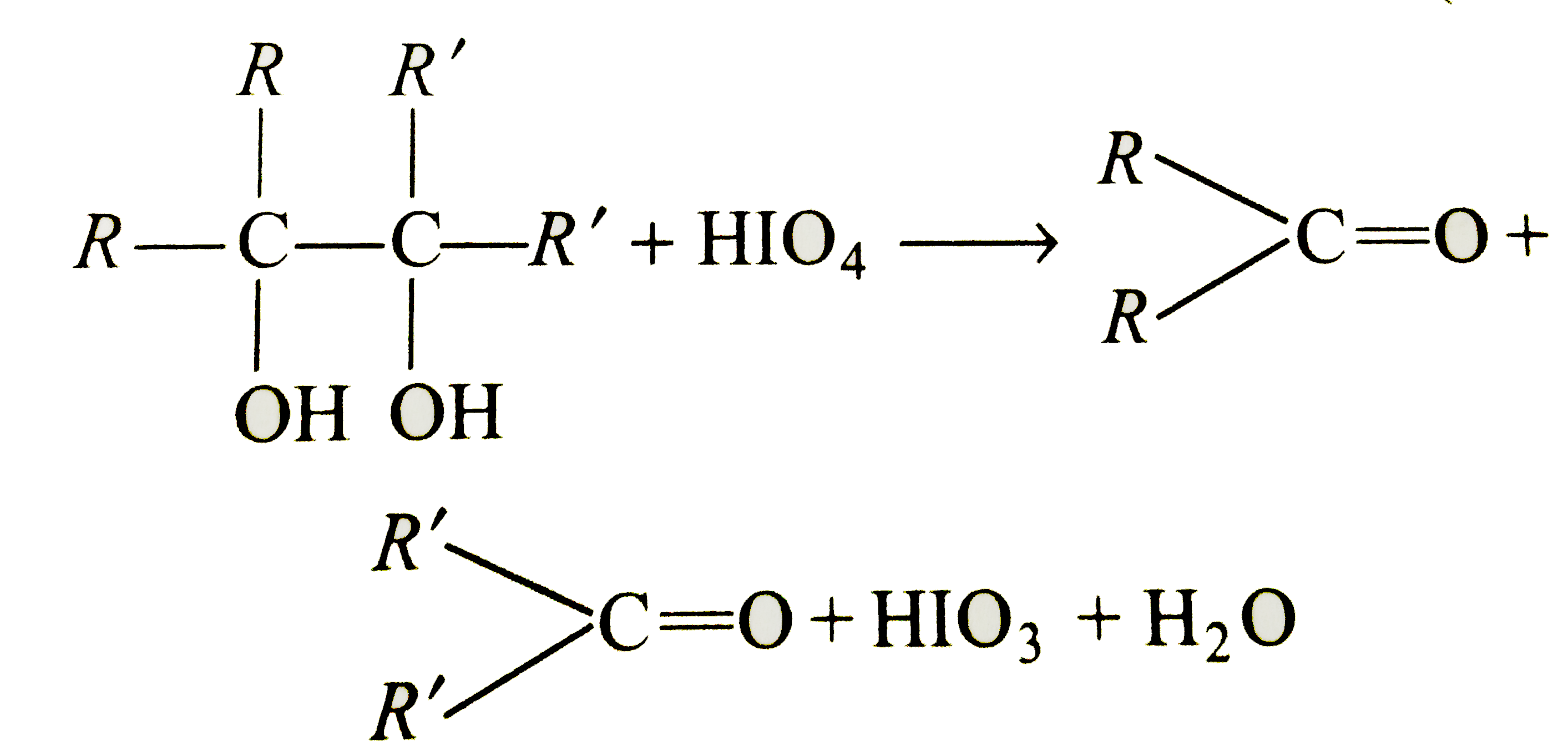
Cyclic diols react to give dicarbonyl compounds. The reactions are faster when the hydroxyl gorups are cid than when they are trans but both stereoisomers are oxidised by periodic acid. Periodic acid cleavage of vicinal diols is often used for analytic purposes as an aid in structure determination. By identifying the carbonyl compounds produced, The constitution of the diol may be deduced.
When arabinose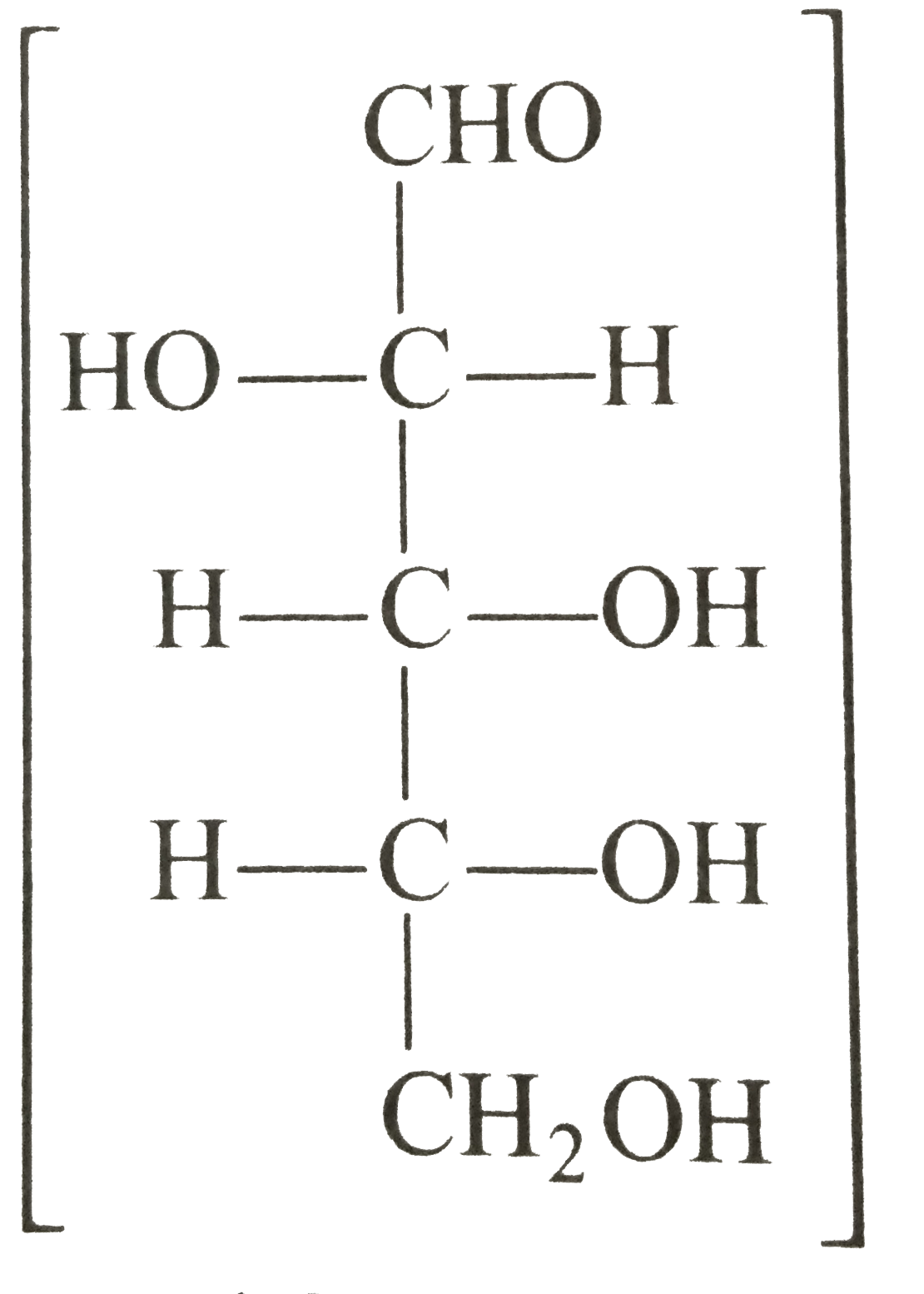 is oxidised by HIO+4, then formaldehyde and formic acid are obtained. Number of molecules of formic acid and formaldehyde obtained respecitively are :View Solution
is oxidised by HIO+4, then formaldehyde and formic acid are obtained. Number of molecules of formic acid and formaldehyde obtained respecitively are :View Solution
Knowledge Check
- Question 1 - Select One
A reaction characteristic of vicinal diols is their oxidative cleavage on treatment with periodic acid (HIO4). The carbon-carbon bond of the vicinal diol uinit is broken and two carbonyl groups result. Periodic acid is reduced to iodic acid (HIO3)

Cyclic diols react to give dicarbonyl compounds. The reactions are faster when the hydroxyl gorups are cid than when they are trans but both stereoisomers are oxidised by periodic acid. Periodic acid cleavage of vicinal diols is often used for analytic purposes as an aid in structure determination. By identifying the carbonyl compounds produced, The constitution of the diol may be deduced.
Which of the following compounds (s) is / are obtained when the following compound is oxidixed by HIO4 ?
 A
A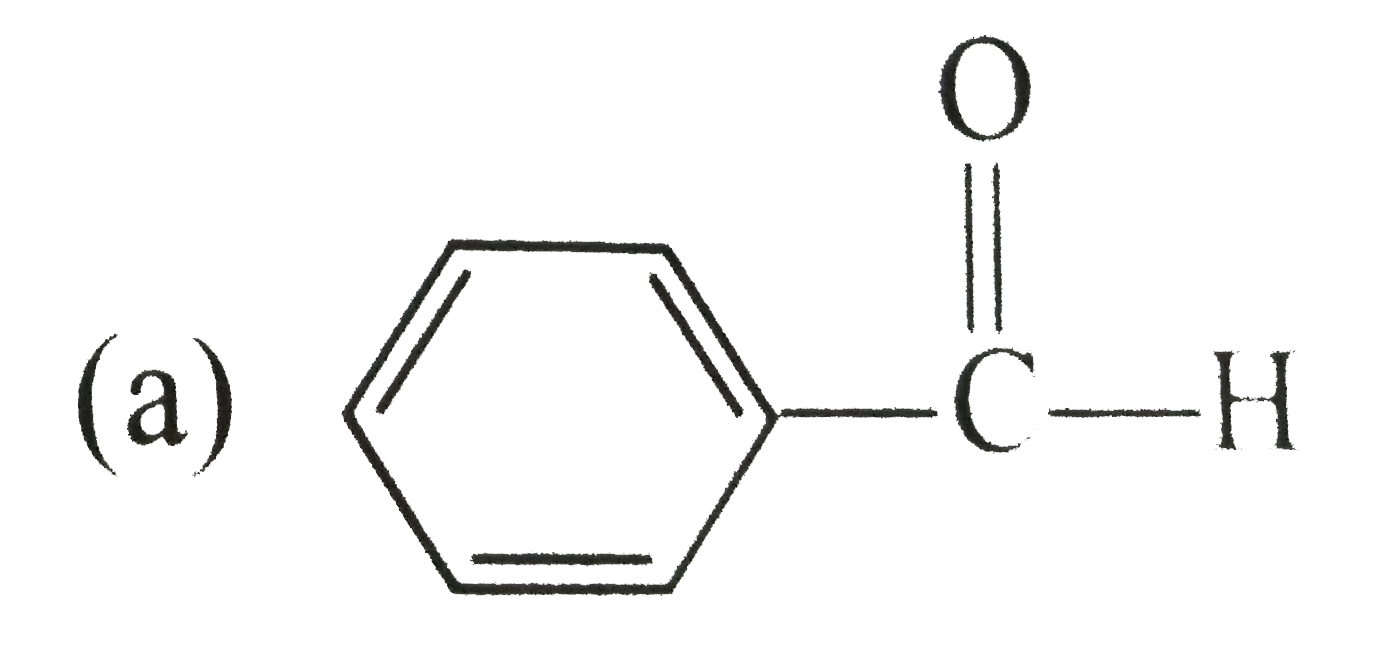 BCH3−O∣∣C−CH3C
BCH3−O∣∣C−CH3C DCH3−O∣∣C−H
DCH3−O∣∣C−H - Question 2 - Select One
A reaction characteristic of vicinal diols is their oxidative cleavage on treatment with periodic acid (HIO4). The carbon-carbon bond of the vicinal diol uinit is broken and two carbonyl groups result. Periodic acid is reduced to iodic acid (HIO3)
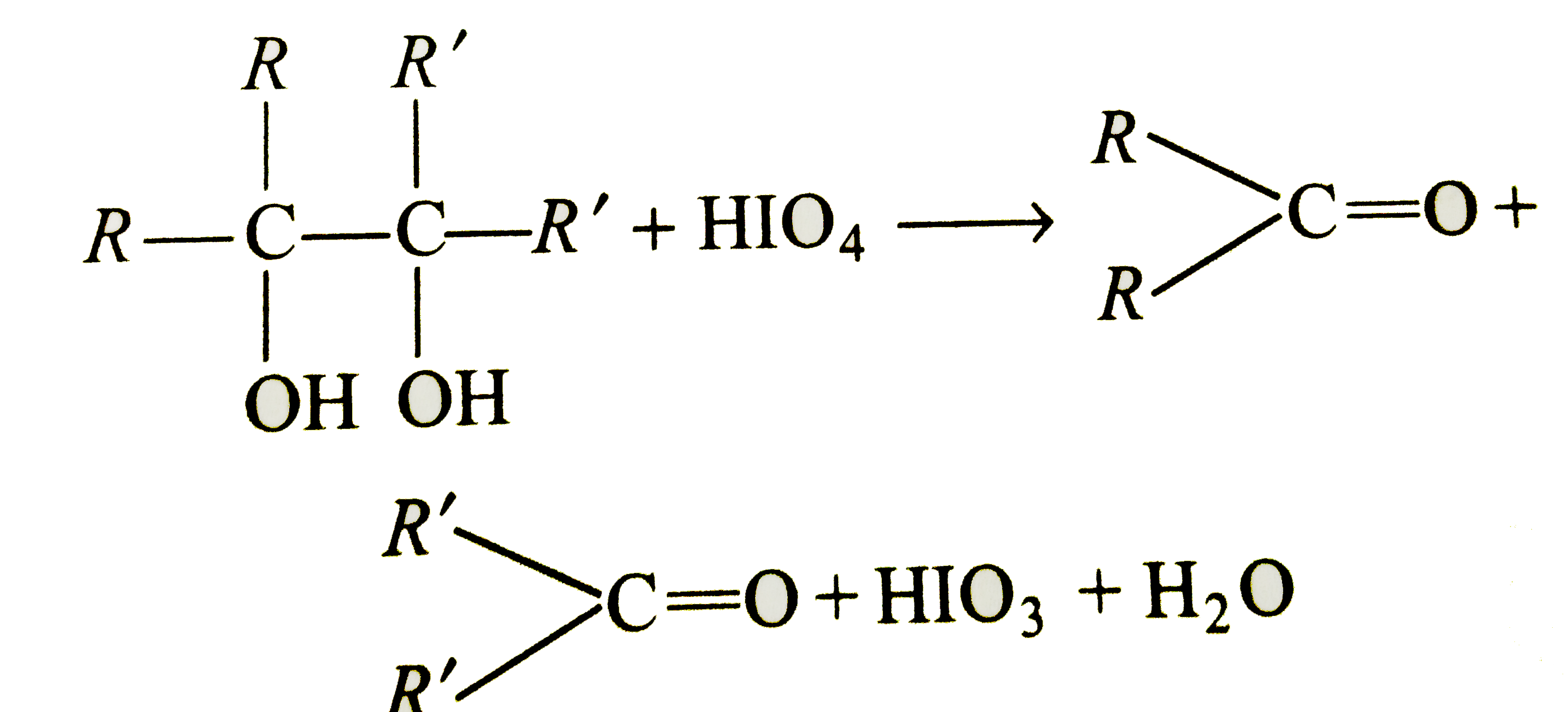
Cyclic diols react to give dicarbonyl compounds. The reactions are faster when the hydroxyl gorups are cid than when they are trans but both stereoisomers are oxidised by periodic acid. Periodic acid cleavage of vicinal diols is often used for analytic purposes as an aid in structure determination. By identifying the carbonyl compounds produced, The constitution of the diol may be deduced.
Which of the following diols will be oxidised by HIO4 ?AF−F∣C∣F−OH∣C∣OH−HBCH2−OH∣CH2−OHCOH∣CH2−CH2−OH∣CH2DAll of these - Question 3 - Select One
A reaction characteristic of vicinal diols is their oxidative cleavage on treatment with periodic acid (HIO4). The carbon-carbon bond of the vicinal diol uinit is broken and two carbonyl groups result. Periodic acid is reduced to iodic acid (HIO3)
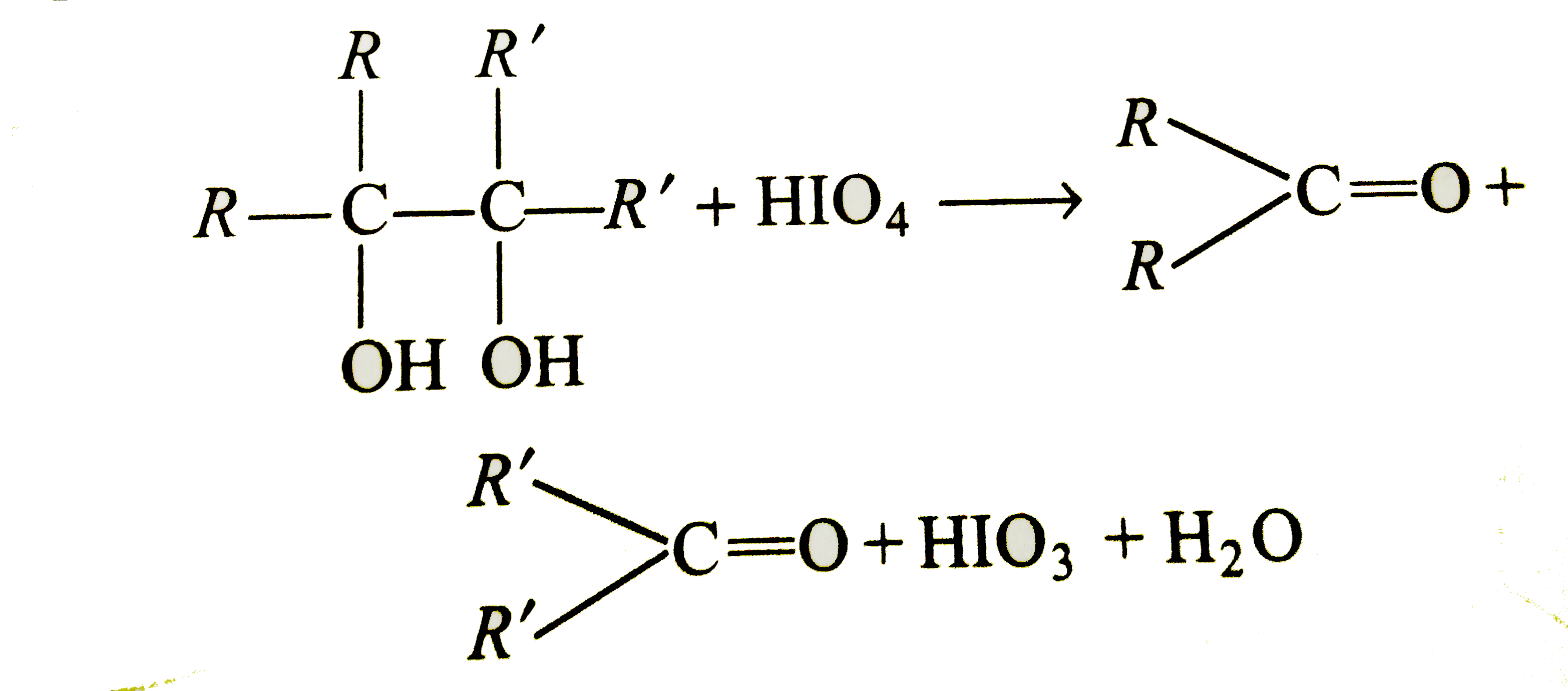
Cyclic diols react to give dicarbonyl compounds. The reactions are faster when the hydroxyl gorups are cid than when they are trans but both stereoisomers are oxidised by periodic acid. Periodic acid cleavage of vicinal diols is often used for analytic purposes as an aid in structure determination. By identifying the carbonyl compounds produced, The constitution of the diol may be deduced.
Which of the following products is/are obtained when glycerol is treated with HIO4 ?AHCHOBHCOOHCHIO3DAll of these
Which of the following compounds does not undergo oxidative cleavage with periodic acid?
View SolutionWhich of the following diols would cleave into two fragments with HIO4
View SolutionWhich of the following diols would cleave into two fragments with HIO4?
View SolutionPeriodic acid is generally used for the oxidation of vicinal diols or α-hydrocarboxyl compounds. Which of the following statements are correct for this reaction
View SolutionThe vicimal diols can be detected by the reaction of the compound with
View Solution
